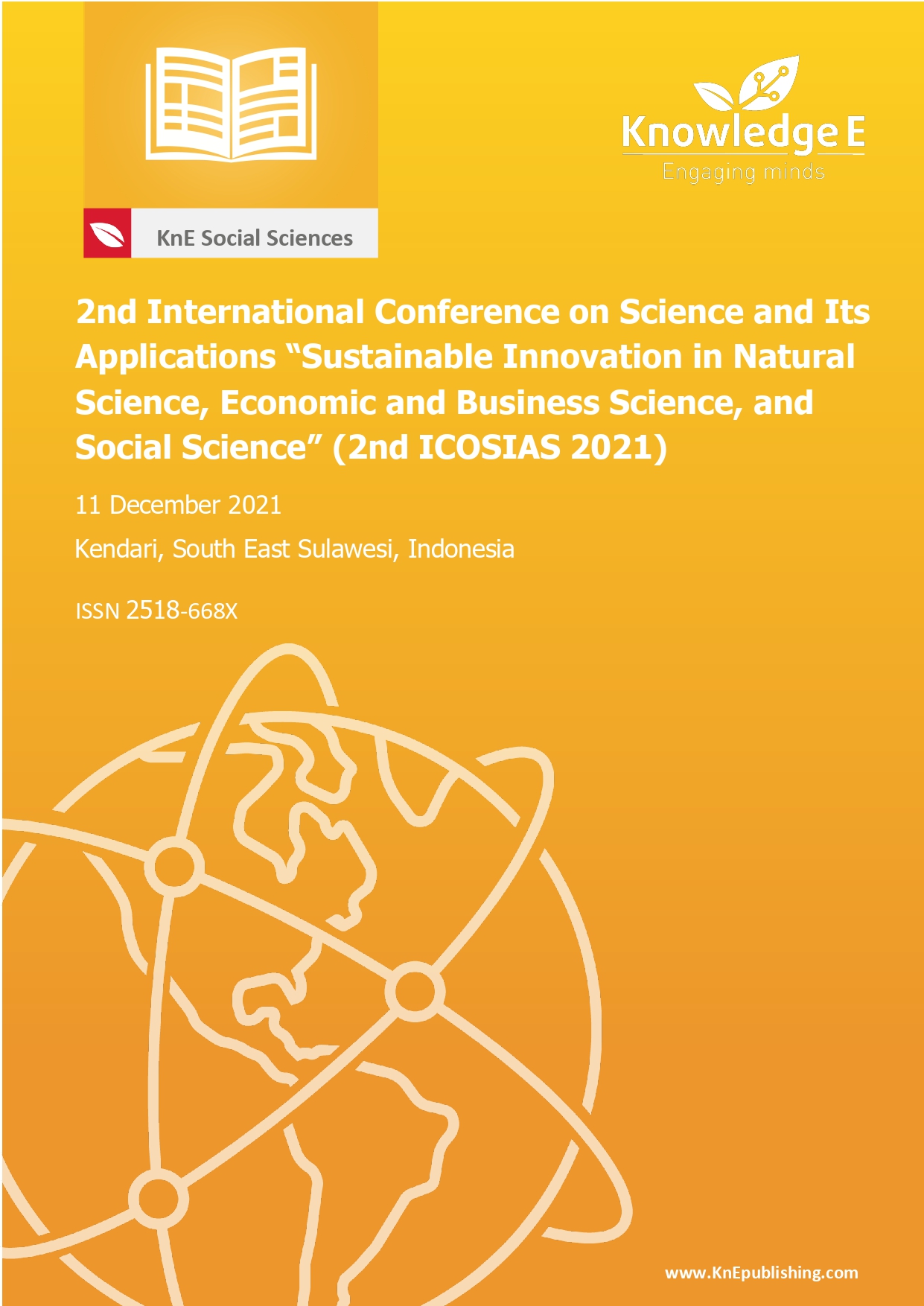Teacher Resilience During the Pandemic
DOI:
https://doi.org/10.18502/kss.v8i2.12750Abstract
Changes in learning activities during the COVID-19 pandemic have consequences for teachers and students. The increasing workload will impact stress levels, so resilience is disrupted. The aim of this research is to create resilience as a power to affect self-esteem and work responsibility that influences the teacher. The study used a both literature review and an empirical approach. The outcomes exhibited that information facing the teacher resilience and methods for raising reflection, distracting pressures, and challenges.
Keywords: Covid-19, Resilience, Teacher
References
Hodges, Charles B., et al. The difference between emergency remote teaching and online learning. Virginia: Educause; 2020.
Milman, Natalie B. This is emergency remote teaching, not just online teaching. America: Education Week; 2020 p. 3.
Rapanta C, Botturi L, Goodyear P. L. Gu’ ardia, and M. Koole. Online university teaching during and after the covid-19 crisis: Refocusing teacher presence and learning activity. Switzerland: Postdigital Science and Education; 2020. pp. 923– 45.
UoPeople. Emergency remote teaching Vs. Online learning: A comparison. 2021. Available from:https://www.uopeople.edu/blog/emergency-remote-teaching- vs-online-learning/.
Iglesias-Pradas S, Hernandez-García A, Chaparro-Pelaez J, Prieto J. Emergency remote teaching and students’ academic performance in higher education during the COVID-19 pandemic: A case study. Spain: Computers in Human Behavior; 2021. p. 106713.
Birchinall L, Spendlove D, Buck R. In the moment: Does mindfulness hold the key to improving the resilience and wellbeing of pre-service teachers? England: Teaching and Teacher Education; 2019. p. 102919.
Salim, Haidir. Penelitian Pendidikan: Metode, Pendekatan, dan Jenis. Jakarta: Kencana; 2019.
Sugiyono, D. Metode penelitian kuatintatif, kualitatif dan R & D/Sugiyono. Bandung: Alfabeta 15.2010; 2018.
Garmezy N. Children at risk: the search for antecedents of schizophrenia. Part 1. Conceptual models and research methods. Netherlands: Schizophrenia Bulletin; 1974. pp. 14–90.
Luthar SS, Cicchetti D, Becker B. The construct of resilience: a critical evaluation and guidelines for future work. New York: Child Development; 2003. pp. 543–62.
Mansfield C, Beltman S, Price A, McConney A. “Don’t sweat the small stuff:” Understanding teacher resilience at the chalkface. Australia: Teaching and Teacher Education; 2012. pp. 357–67.
Ungar M. A constructionist discourse on resilience. Canada: Youth and Society; 2004. pp. 341–65.
Brunetti GJ. Resilience under fire: perspectives on the work of experienced, inner city high school teachers in the United States. United States: Teaching and Teacher Education; 2006. pp. 812–25.
Bobek BL. Teacher resiliency: a key to career longevity. England: The Clearing House; 2002. pp. 202–5.
Castro AJ, Kelly J, Shih M. Resilience strategies for new teachers in high-needs areas. United States: Teaching and Teacher Education; 2010. pp. 622–9.
Oswald M, Johnson B, Howard S. Quantifying and evaluating resilience promoting factors: teachers’ beliefs and perceived roles. Australia: Research in Education; 2003. pp. 50–64.
Tait M. Resilience as a contributor to novice teacher success, commitment, and retention. Canada: Teacher Education Quarterly; 2008. pp. 57–76.
L. Sokal, T. L. Eblie, and J. Babb. Canadian teachers’ attitudes toward change, efficacy, and burnout during the COVID-19 pandemic. Canada: International Journal of Educational Research Open; 2020. P. 100016.
Sokal L, Eblie TL, Babb J. How to prevent teacher burnout during the coronavirus pandemic. Canada: The Conversation Canada; 2020.
Newcamp E. You are not your child’s teacher; 2020. Availble from:https://slate.com/human interest/2020/03/you-are-not-your-childs- teacherquarantine-education.html.
Gastaldi, F. G. M., Pasta, T., Longobardi, C., Prino, L. E., & Quaglia, R. Measuring the influence of stress and burnout in teacher-child relationship. Spain: European Journal of Education and Psychology; 2014. p. 17-28.
Goldberg, Simon B., et al. Is mindfulness research methodology improving over time? A systematic review. PloS one; 2017. p. 12.10: e0187298.
Hart NI. Student teacher anxieties: Four measured factors and their relationships to pupil disruption in class. United Kingdom: Educational Research; 1987. pp. 12–8.
Carmichael, Neil. Recruitment and retention of teachers: Fifth Report of Session 2016–17; 2017.
Lynch S, Worth S, Bamford J, Wespieser S. Engaging teachers: NFER analysis of teacher retention. England: NFER; 2016.
Kerr SL, Lucas LJ, DiDomenico GE, Mishra V, Stanton BJ, Shivde G, et al. Is mindfulness training useful for pre service teachers? An exploratory investigation. Washington: Teaching Education; 2017. pp. 349–59.
Li Q, Tarimo CS, Miao Y, Zeng X, Wu C, Wu J. Effect of mask wearing on anxiety of teachers affected by COVID 19: A Large cross-sectional study in China. J Affect Disord. 2021;281(February):574–80.
Choi EP, Hui BP, Wan EY. Depression and anxiety in Hong Kong during COVID-19. (Int. J. Environ. Res. Public Health, Switzerland. 2020;(May):3740.

